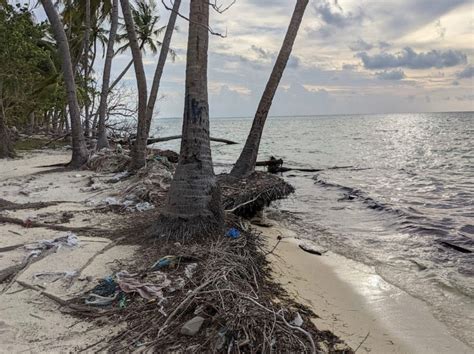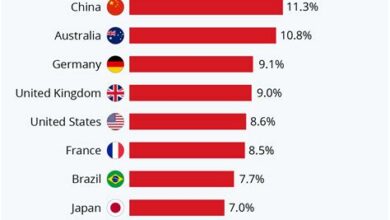Environmental Challenges Facing the Maldives: Rising Sea Levels

Learn about the impact of rising sea levels on Maldivian islands, adaptation strategies, threats to freshwater resources, and international cooperation for climate action.The Maldives, an exquisite archipelago in the Indian Ocean, is renowned for its stunning beaches, crystal-clear waters, and vibrant marine life. However, the paradise faces a formidable foe – rising sea levels. In this blog post, we will delve into the pressing environmental challenges confronting the Maldives, with a particular focus on the detrimental impact of rising sea levels. We will explore the science behind rising sea levels, its direct implications on the low-lying Maldivian islands, and the urgent need for adaptation strategies to safeguard the country’s infrastructure. Moreover, we will discuss the looming threat posed to the Maldives’ already limited freshwater resources and the crucial role of international cooperation in addressing this climate crisis. Join us as we unravel the complexities of this environmental threat and delve into potential solutions for the Maldives to combat the perilous consequences of rising sea levels.
Understanding rising sea levels
Rising sea levels are a result of the melting of polar ice caps and glaciers, as well as the thermal expansion of seawater due to climate change. This phenomenon has significant implications for coastal communities and low-lying islands, such as the Maldives. The Maldives, an archipelago nation in the Indian Ocean, is particularly vulnerable to rising sea levels, as the majority of its landmass is only a few feet above sea level.
Furthermore, the increased frequency and intensity of storms and hurricanes due to climate change can exacerbate the impact of rising sea levels, causing erosion and inundation of coastal areas. As a result, understanding the dynamics of sea level rise is crucial for addressing the environmental challenges facing the Maldives and other similarly situated regions.
In order to mitigate the effects of rising sea levels, it is essential to implement sustainable coastal protection measures and adapt infrastructure to withstand higher water levels. Additionally, fostering international cooperation and implementing policies to reduce greenhouse gas emissions are crucial components of addressing this pressing environmental issue.
Impact on Maldivian islands
The Maldives, an archipelago of over 1,000 coral islands, is one of the most vulnerable countries to the impacts of rising sea levels. The rise in sea levels has resulted in a number of negative consequences for the Maldivian islands, including coastal erosion, saltwater intrusion, and the loss of land. This has had a significant impact on the local population, particularly those living in low-lying areas.
Coastal erosion, a direct result of rising sea levels, has led to the loss of valuable land and infrastructure. The encroaching sea has also caused saltwater intrusion, which has contaminated freshwater sources and affected agricultural activities. Additionally, the increased frequency and intensity of storms and cyclones, exacerbated by rising sea levels, have further degraded the islands’ natural and built environment.
The impacts of rising sea levels on the Maldivian islands have prompted the government to implement adaptation strategies, including the construction of seawalls and other coastal protection measures. Efforts are also being made to diversify the economy and reduce dependence on sectors that are vulnerable to the impacts of climate change. Furthermore, there is a growing emphasis on international cooperation and solidarity to address the challenges posed by rising sea levels and other environmental threats facing the Maldives.
Adaptation strategies for infrastructure
Adaptation strategies for infrastructure
Adaptation strategies for infrastructure in the face of climate change are crucial for the sustainability and resilience of coastal communities, particularly in low-lying areas such as the Maldives. As sea levels continue to rise, the threat to infrastructure becomes increasingly severe, making it imperative for adaptation measures to be implemented promptly and effectively.
One of the key adaptation strategies for infrastructure in the Maldives is the construction of climate-resilient buildings and transportation networks. This involves using materials and designs that can withstand the impact of rising sea levels, storm surges, and extreme weather events. Additionally, elevating critical infrastructure such as power plants, water treatment facilities, and hospitals is essential to protect these vital systems from the dangers posed by sea level rise.
Another important adaptation strategy for infrastructure is the implementation of nature-based solutions, such as mangrove restoration and reforestation. These natural barriers can help mitigate the impact of coastal erosion and flooding, providing protection for infrastructure and communities. Furthermore, incorporating green infrastructure, such as rain gardens and permeable pavement, can improve drainage and reduce the risk of inundation in urban areas.
Threat to freshwater resources
One of the most pressing environmental challenges facing the Maldives is the threat to freshwater resources. With the rising sea levels, there is an increased risk of saltwater intrusion into the freshwater lens, which is the primary source of drinking water for the Maldivian population. As the sea levels continue to rise, the availability and quality of freshwater resources are increasingly at risk, posing a significant threat to the livelihoods and well-being of the people living in the Maldives.
The freshwater resources in the Maldives are already limited, with the majority of the country’s population relying on rainwater collection and groundwater for their daily needs. With the encroachment of saltwater into these freshwater sources, the already scarce water supply is becoming even more precarious. This not only impacts the availability of drinking water but also has implications for agriculture, which is a crucial source of livelihood for many Maldivians.
Addressing the threat to freshwater resources in the Maldives requires urgent and comprehensive measures to ensure the sustainability and resilience of water sources. This includes implementing innovative desalination technologies, expanding rainwater harvesting systems, and improving water management practices. Additionally, raising awareness about the importance of water conservation and sustainable use is essential in mitigating the impact of rising sea levels on freshwater resources in the Maldives.
International cooperation for climate action
In the face of global climate change, it has become increasingly evident that action at the international level is crucial for addressing this pressing issue. International cooperation is essential in tackling climate change as it is a problem that transcends national boundaries and requires a unified effort from all countries. Through collaboration, countries can share knowledge, resources, and technologies to mitigate the impacts of climate change and work towards sustainable solutions.
One of the key aspects of international cooperation for climate action is the negotiation and implementation of international treaties and agreements. The landmark Paris Agreement, for example, brought together nearly 200 countries to commit to reducing greenhouse gas emissions and limiting global temperature rise. Such agreements are vital in setting global targets and standards for environmental protection and can encourage countries to take concrete actions to combat climate change.
Furthermore, international cooperation can also involve financial and technical support for developing countries that are most vulnerable to the impacts of climate change. Developed nations can provide funding for adaptation and mitigation efforts, as well as assist in the transfer of clean and sustainable technologies. This kind of support is crucial in helping developing countries build their resilience to climate change and transition towards low-carbon economies.





